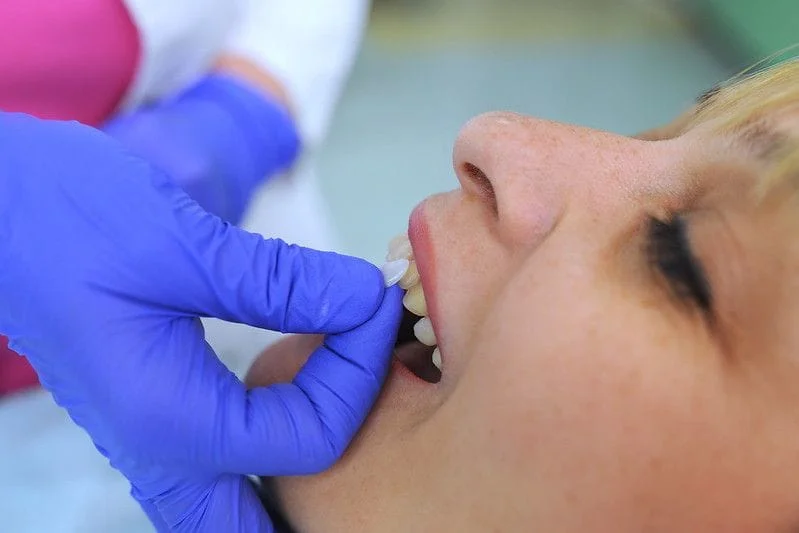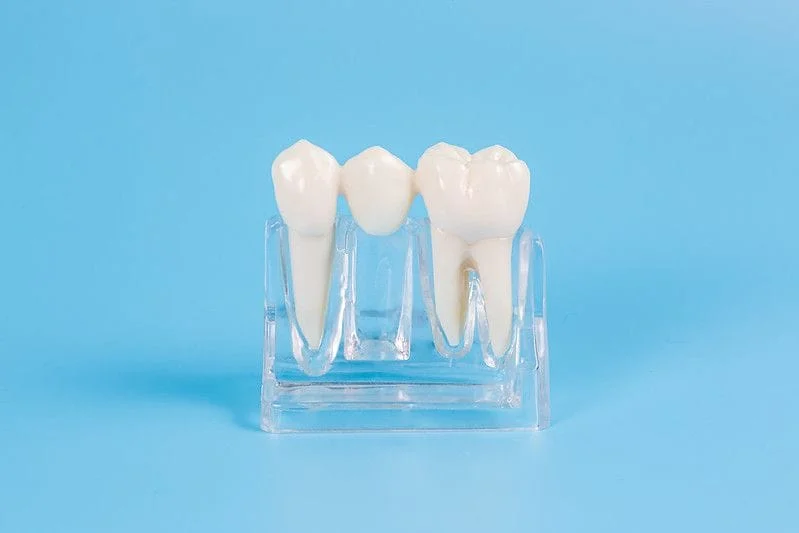
Crowns, Bridges, & Veneers
Veneers
Teeth that have spaces, are badly stained, shaped or crooked may be improved by a veneer. Veneers are thin pieces of porcelain cemented over the front of your teeth to change their color or shape.
Veneers have a longer life expectancy and color stability than bonding. They highly resist permanent staining from coffee, tea, or smoke.
Veneers require minimal to sometimes no preparation of the teeth. Before veneers can be considered, a periodontal (gum) and caries (cavity) assessment must be done. This is essential in determining if a patient has adequate oral hygiene habits to maintain a veneer.
Crowns are sometimes confused with veneers, but they are quite different. Veneers are typically applied only to the facial (front) of the tooth while a crown sits circumferentially, 365 degrees on the tooth.
Caring For Your Veneers
With proper care, a good quality veneer could last a long time. It is important to floss and/or use a waterpik in the area of the veneer to avoid excess plaque or collection of debris around the restoration.
Certain behaviors such as jaw clenching or bruxism (teeth grinding) significantly shorten the life of a veneer. Moreover, eating brittle foods, ice or hard candy can compromise the adhesion of the veneer, or even damage the veneer.
Crowns
Crowns are synthetic caps, usually made of a material like zirconia or porcelain, placed on the top of a tooth. After root canal therapy or when decay has become so advanced that large portions of the tooth must be removed, crowns are often used to restore the tooth’s function and appearance.
Crowns also serve an aesthetic use, and are applied when a discolored or misshapen tooth needs to be restored to its natural appearance. Crowns are also used to attach bridges, cover implants, prevent a cracked tooth from becoming worse, or replace existing fillings that are in jeopardy of becoming loose or fractured.
Crowns are sometimes confused with veneers, but they are quite different. Veneers are typically applied only to the facial (front) of the tooth while a crown sits circumferentially, 365 degrees on the tooth.

Bridges
Bridges are natural-looking dental appliances that can replace one tooth or a section of missing teeth. Because they are custom-made, bridges are barely noticeable and can restore the natural contour of teeth as well as the proper bite relationship between upper and lower teeth. Zirconia, porcelain, gold alloys or combinations of materials are usually used to make bridge appliances.
Procedures
A tooth must be reduced in size to accommodate a crown that will sit on top of the natural tooth circumferentially. An impression or scan is then taken of the now prepared tooth to create a custom-designed crown. The impression or scan is sent to a special lab. Case pending, a temporary crown is applied until the permanent crown is ready. Permanent crowns are then cemented in place at a subsequent visit.
Caring For Your Crowns and Bridges
With proper care, a good quality crown or bridge could last a long time. It is very important to floss and use a waterpik in the area of the crown or bridge to avoid excess plaque or collection of debris around the restoration.
Certain behaviors such as jaw clenching or bruxism (teeth grinding) significantly shorten the life of a crown or bridge. Moreover, eating brittle foods, ice or hard candy can compromise the adhesion or even damage the crown or bridge.
